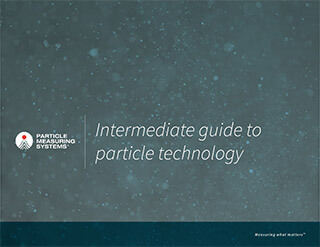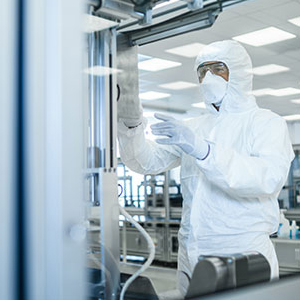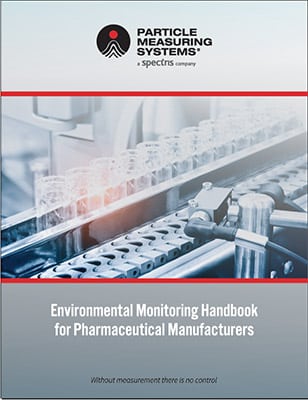The second in the Guide to Particle Technology series, and building on the Beginner Guide, this practical Intermediate guide discusses how particle size is relevant to manufacturing.
You will also learn about:
 Particle distribution. Read about the laws that apply to particle spread.
Particle distribution. Read about the laws that apply to particle spread.- Particle mechanics. What tendencies do particles exhibit?
- Particle detection. Particle counters use sophisticated methods to produce data.
Particle detection
1. Particle counters do not count particles. Particle counters count pulses of scattered light from particles, or in some cases, shadows cast by backlit particles. The amount of light a particle scatters, or eclipses, can vary with several factors, including the following:
- The shape of the particle. Particles are seldom smooth and spherical like the polystyrene sulfonate lithium (PSL) particles used in particle counter calibrations. Often, particles are flakes of
skin or jagged fibers. When they pass through the viewing volume sideways, they will scatter a different amount of light than if they travel through lengthwise. - The albedo (reflectivity) of the particle. Some particles are more reflective than others (e.g., aluminum), causing more scattered light onto the photodetector and producing a larger pulse. The particle counter thinks the particle is larger than its actual size. Conversely, some particles are less reflective than others (e.g., carbon), and the particle counter thinks a smaller particle passed through the viewing volume.
2. Some particle counters count every particle in the sample media. These are referred to as volumetric particle counters. In contrast, non-volumetric particle counters do not count every particle within a volume. These particle counters sample a portion of the total volume and use this data to extrapolate results for a unit volume (e.g., counts/cubic foot or counts/mL). Particle counters should sample enough of the media (air, liquid or gas) to statistically represent the entire volume. This is called statistical significance and is a valid representation of the
entire volume.
If you precisely measure a number of particles at a nominal size of 0.3 µm and graph the results, it would look like GRAPH 3.
The graph illustrates Gaussian distribution, with the particles nominally centered at 0.3 µm. In a particle counter, the particles smaller than the nominal size will be counted in the lower particle size bin; particles equal to or larger than the nominal size will be placed in that bin.
Interested in learning more? Complete the form to receive.
the Intermediate guide to particle technology.
Learn more by attending our Particle College.




